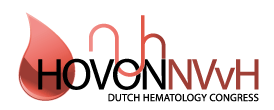PEDIATRIC EXPERIENCE WITH REVUMENIB TREATMENT IN ACUTE LEUKEMIA IN THE AUGMENT-101 PHASE 2 STUDY AND REVUMENIB NAMED PATIENT PROGRAM
Revumenib, a potent, oral, menin-inhibitor blocking menin-KMT2A interaction, is investigated in relapsed/refractory (R/R) KMT2A-rearranged+NPM1-mutated acute leukemias in the AUGMENT-101 phase-2 study (NCT04065399). Phase-1 results showed preliminary antileukemic activity in children. A named patient program (NPP) is available for patients not eligible/unable to enroll in AUGMENT-101. Safety/efficacy of revumenib-monotherapy in AUGMENT-101 phase-2 study and revumenib-NPP are evaluated.
Revumenib was administered orally every 12 hours in 28-day cycles at RP2D (with strong CYP3A4-inhibitor) of 163 mg or 95 mg/m2 (body weight<40 kg). Patients aged ≥30 days with R/R KMT2Ar acute leukemia were eligible. In revumenib-NPP children with R/R AML with NUP98r or UBTF tandem duplication were also included. Primary efficacy endpoint was complete remission rate (CR+CRh). Safety was evaluated in patients receiving >1 dose of revumenib. Efficacy interim analysis was conducted 6 months after 57th efficacy-evaluable patient was enrolled.
At interim analysis of AUGMENT-101 (data-cutoff:24-Jul-2023), 94 patients received ≥1 dose of revumenib; Pediatric patients (N=23, median age [range]:4.0y [1.3–17.0y]) had a median [range] 3 [1–11] prior lines of therapy, with 52.2% receiving prior HSCT. Efficacy interim analysis included 13/57 (22.8%) children. Primary endpoint in the adult+pediatric population (CR/CRh>10%) was met: CR+CRh rate was 22.8% (13/57;95%CI:12.7–35.8;P-value:0.0036). Three of 13 children achieved CR/CRh (23.1%;95%CI:5.0–53.8); median [range] time to first CR/CRh in children was 2.27 [1.0–3.9] months. Among children, overall response rate (ORR:CRc+MLFS+partial remission) was 46.2% (6/13;95%CI:19.2–74.9); CRc-rate (CR+CRh+CRi+CRp) was 38.5% (5/13;95%CI:13.9–68.4). Median overall survival was 6.9 (95%CI:2.3–not reached) months. Four of 6 pediatric responders (67%) proceeded to HSCT; 2 resumed revumenib post-HSCT. Differentiation syndrome and QTc-prolongation (grade≥2) were reported in 8/23 and 1/23 children, respectively.
From Oct’22-Oct’24, 7 children with R/R AML with KMT2Ar (N=4), NUP98r (N=2) or UBTF-TD (N=1) received revumenib in the NPP in The Netherlands. Median age [range] was 7.0y [0.8–17.0y]) with a median [range] 3 [1–4] prior lines of therapy, with 57% receiving prior HSCT. ORR was 86%, CRc-rate was 71% with a median [range] time to first CRc of 2.3 [1-4.5] months. Five of 6 responders (83%) proceeded to HSCT; 1 resumed revumenib post-HSCT. Differentiation syndrome and QTc-prolongation (grade ≥2) were both reported in 1/7 children.
No dose reductions were reported in children; one discontinuation occurred due to treatment-emergent adverse events (febrile neutropenia) in AUGMENT-101.
Revumenib-monotherapy in heavily pre-treated pediatric R/R acute leukemia shows promising results with manageable safety profile in AUGMENT-101 study and revumenib-NPP. AUGMENT-101 met its primary efficacy endpoint in adults and children with R/R KMT2Ar acute leukemia, validating phase-1 results. Responses were also observed in R/R AML with NUP98r or UBTF-TD in revumenib-NPP. Safety/efficacy were similar in adults and children.

